#Japanese shinto
Text

Snow at the Shrine Entrance, Hakone Gongen, Hasui Kawase, 1957
#art#art history#Asian art#Japan#Japanese art#East Asia#East Asian art#shin-hanga#woodblock print#Hasui Kawase#Kawase Hasui#landscape#landscape art#winter#winter scene#Shinto#Showa period#Showa era#20th century art
1K notes
·
View notes
Text
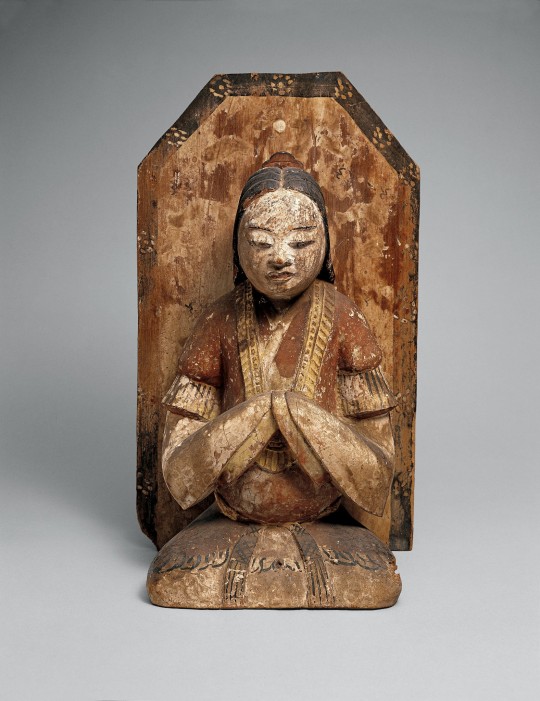
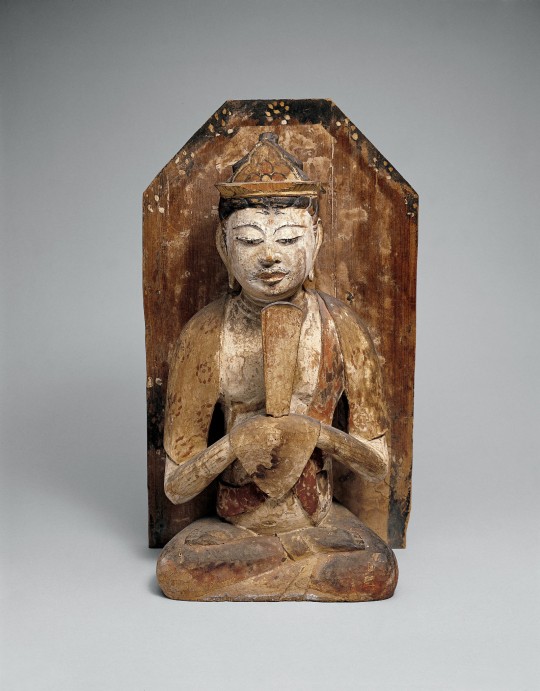
~ Shinto Goddess and Shinto God.
Date: 12th-13th century
Place of origin: Japan
Medium: Wood with color
#history#museum#archeology#sculpture#history of art#shinto goddess#shinto#shinto god#japanese art#japan#japanese#asian art#wood#12th century#13th century
530 notes
·
View notes
Text
Oshi No Ko was about Arima Kana all along.
And I think there’s a real possibility she may die at the end.
Or be placed in the way of grave danger.
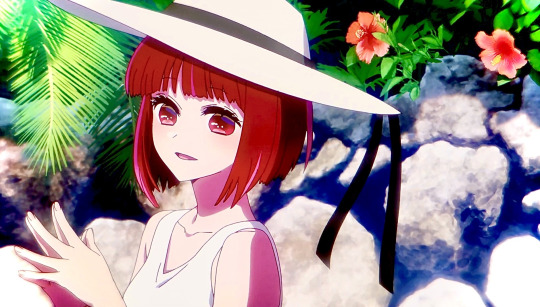
I was reading some AquKane shippers say something about how they don’t understand AquaKana, and why the writers and directors keep clearly pushing Kana towards Aqua when they barely share any chemistry. Whereas, in their belief, his relationship with Akane is more honest, deeper, whatever. I’m not here to argue about that. But I get where they’re coming from. And the simple explanation is this:
It’s because this whole story was written for Arima Kana.
I’ve seen some Youtubers talk about how this whole story was meant to be fulfillment for Ruby/Sarina’s dream to become the next great Idol, something about Amaterasu favoring her.
And that’s near what I thought of it. But I really think if the God of Entertainment wanted to bless a child with cancer a second life as the world’s great idol, they’d also give her a great singing voice, y’know?
Spoilers for the manga, of course as we go along on this explanation. So anime onlies, get caught up before you start reading me ramble.
Here we go:
1. Arima Kana is the embodiment of Amaterasu, not Ruby.
Or at least, Amaterasu’s appointed representative, or her favorite daughter.
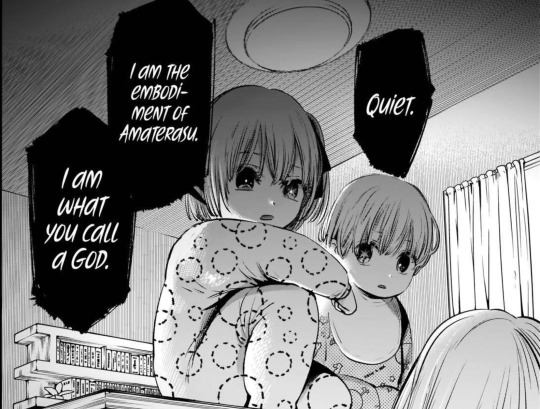
To give you a run-down of some of the core Shinto/Japanese Mythology that is important for the story, the Creator God Izanaki had three children:
Amaterasu, Goddess of the Sun.
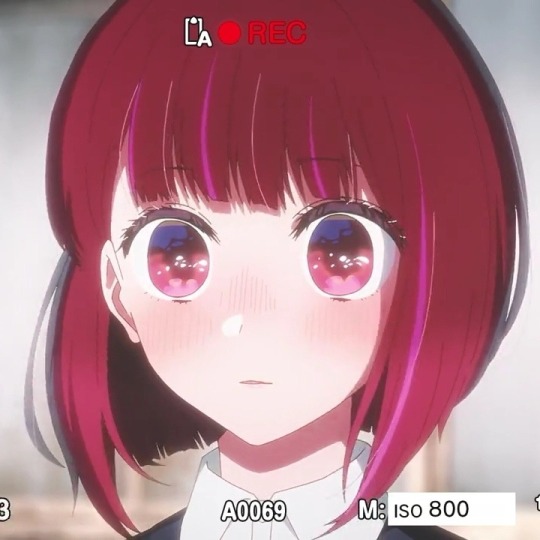
Tsukuyomi, the Moon.

Susanoo, the Storm.
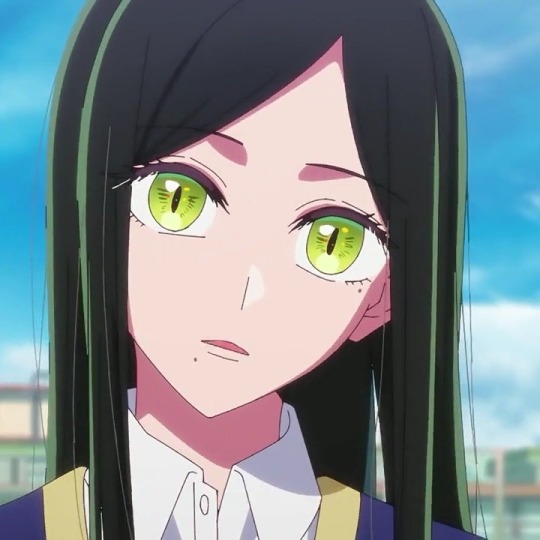
The story goes that Amaterasu and Susanoo had a competition about who could create better gods. So Amaterasu took Susanoo’s Totsuka-no-Tsurugi* (longsword) and split it into three, from which she birthed the three Munakata goddesses.
And woncha knowit, there are three great actresses born in that year?
*A reminder that Kana plays the character Tsurugi, which literally just means Sword. And Akane’s character Saya-hime just literally means Sheath or Scabbard Princess.
In this bet, Amaterasu got clever with the rules and won on a technicality. Susanoo went on a rampage, destroyed Amaterasu’s ricefield, and flayed Amaterasu’s favorite divine horse*, and then threw its body at her loom.
*The name Arima is spelled with the Kanji of Horse & Exist/Live.
Amaterasu, in her grief, flees into a cave, believed to be Amano Iwato cave, right in the town of Takachiho, Amamiya Gorou’s hometown, and the death place of Tendouji Sarina.
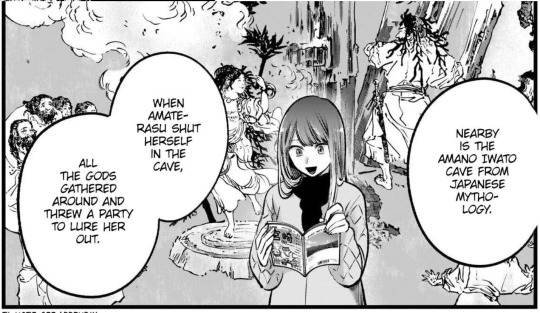
The being that draws Amaterasu out of there was the Goddess of the Dawn, known also as the Goddess of the Revelry & Arts, a being that Aqua says he knows well, and believes there’s a grain of truth to:
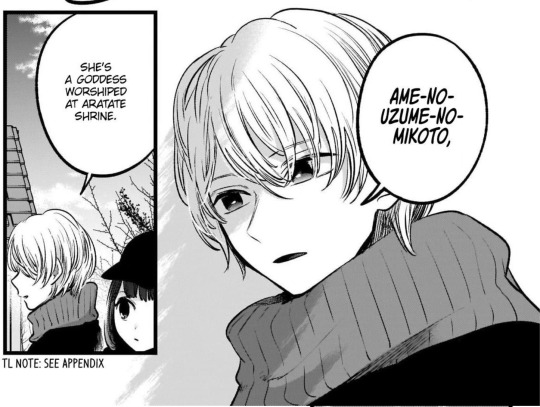
And how does Ame-no-Uzume draw Amaterasu out of her grief?
By throwing an absolute rager, and dancing really wildly that it catches her attention and makes all the gods around them laugh so hard. Just like:
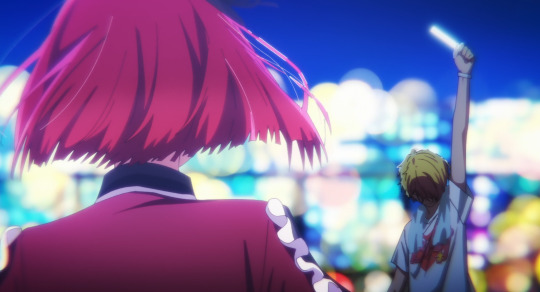
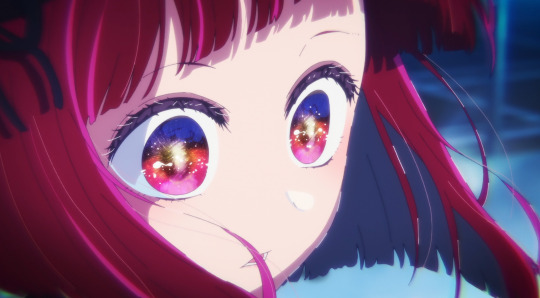


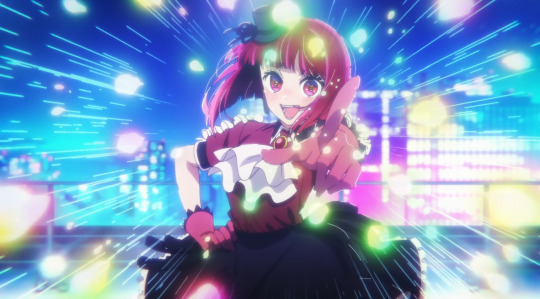
Ame-no-Uzume will later on marry a diety who tried to block her passage before, Sarutohiko, who in Ise is worshipped as the god who illuminates the world.
That’s some divinity-level AquaKana shipping right there.
Just like how Aka Akasaka wrote the story of Kaguya-sama: Love Is War about two lovers who couldn’t be together just like in the myth of Kaguya, but having his characters overcome all odds to defy divine fate, I do believe that apart from the parallels to the mythology like he did in Kaguya-sama, there is very literal divine intervention this time in Oshi No Ko.
I think what’s happening is that the gods, particularly Amaterasu and Susanoo are quarelling again about who could create better gods, just like before, but now more of whose favored child will shine the brightest and be worshipped by the most humans. But just like last time, Susanoo may have been enraged, especially at the sexual assault of his chosen Hikaru Kamiki, that he possessed him with a corrupting force that urges him to destroy shining stars before they reach their peak, hence the murders of Himekawa Airi, Hoshino Ai**, and Katayose Yura.
Which by the way, the name Hikaru means Radiant Light!
And Hoshino means Field of Stars!
Whether it’s because Amaterasu is angry that every daughter she sends to earth is slaughtered by Susanoo’s chosen, or just because she wants to win their competition, she appoints Ame-no-Uzume to assist in safeguarding her new favored one from Kamiki’s clutches. Her new favored one being Arima Kana.
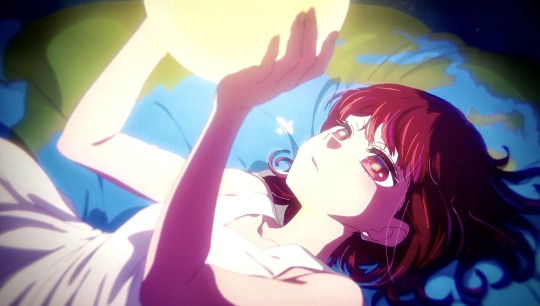
And therefore, Ame-no-Uzume takes the souls of two motherless humans who had passed before they could shine and sent them to become Hoshino Ai’s twin children. It was all anyway happening in her territory of Takachiho at the most opportune time.
Ame-no-Uzume is also known as The Goddess of Dance, as well as The Great Pursuader. And wouldn’t you know, that’s exactly the gifts that the Hoshino Twins received.
An energetic performer who takes the stage with dance:
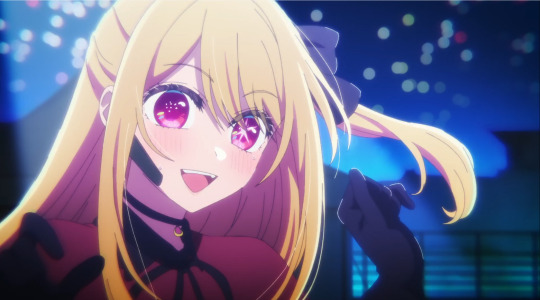
And a deceptive, persuasive, extremely believable actor, who:

fooled his own sister into believing she had been rejected from an audition
pretended to scout an idol from a competing agency to research them
get Director Gotanda to raise him and train him
make Akane not just date him, but follow him down a destructive path
convince Kana and Mem to join IchigoPro
impersonate Pieyon for several days straight
Anyway, I truly, truly believe that unbeknownst to Aqua, his true mission is just to keep drawing Kana out of her darkness until she shines the brightest. Which is what he keeps doing anyway:




2. The Timing of the whole Oshi No Ko plot is aligned with Arima Kana’s rise to unprecedented stardom.
The story of Ai Hoshino’s pregnancy and meeting of Gorou Amamiya in a quaint hospital occurs at the beginning of Arima Kana’s life, just after she is born.
She meets Aqua Hoshino around age 4, already talented, and already extremely arrogant which could have easily been the demise of her career. But meeting Aqua and seeing his acting was a necessary wake-up call for her, that it brings her to tears. She never forgets this experience that she brought that lesson with her to her adulthood: that she can’t be satisfied and keep working harder, and to be a better communicator with her colleagues. At their first point of contact, Aqua already becomes the reason why Arima Kana’s acting career survives the slump.
They meet again in high school, when Arima Kana has one acting job in a lackluster production of Sweet Today. The ratings had plummeted, if not for the fact that Aqua came onto the set to draw out the best acting Arima Kana could deliver. After this, Arima receives much more respect and recognition from her colleagues in the industry beyond just being cast to bring some legitimacy to their production.
It’s because of Aqua and Ruby that Kana joins IchigoPro’s Idol Division, and her career is reborn anew. Such that, even after quitting B-Komachi, Arima states she never regretted the decision to join, because otherwise the career of Arima Kana would have been already over.

It’s because of Aqua’s presence that Arima trains to become better and better as an idol. Aqua kept drawing out the light from Kana’s eyes, to the point that it catches the attention of the crowd who previously had no interest in her.
It’s because of her experience as an idol that she regains the confidence and sense of greed necessary to grab the attention of the audience when on stage, such that even Akane recognizes this change in her when Arima takes the stage as Tsurugi for the 2.5 Adadptation of Tokyo Blade.
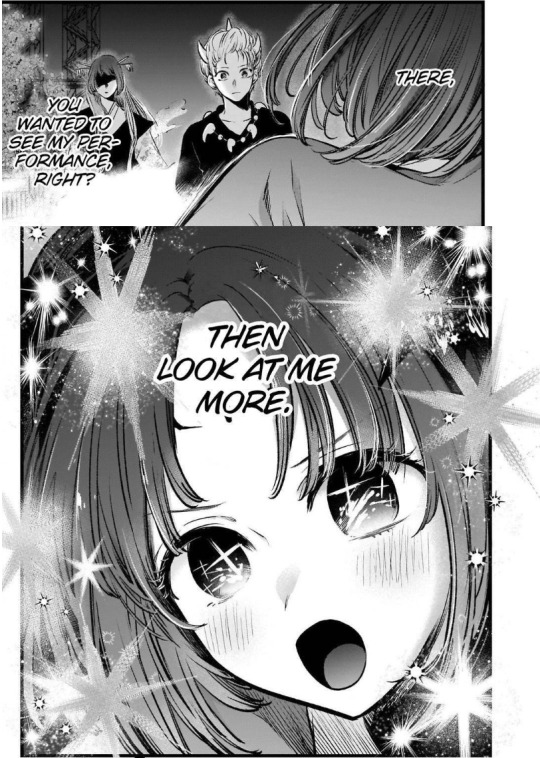
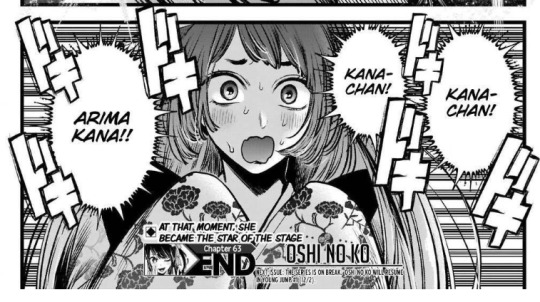
And it’s because of all of these that she captures the attention of award-winning Director Masanori Shima, who lines up some roles for her when her acting schedule had dried up. It’s once again because of Kana’s dedication towards Aqua that Shima D finds her so interesting that he was most willing to promise her the best role possible.

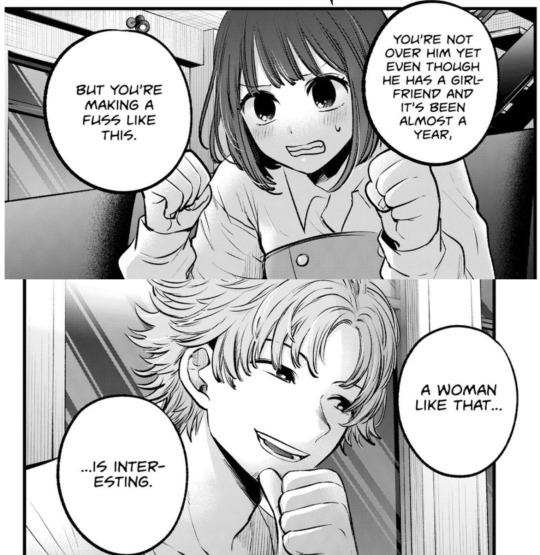
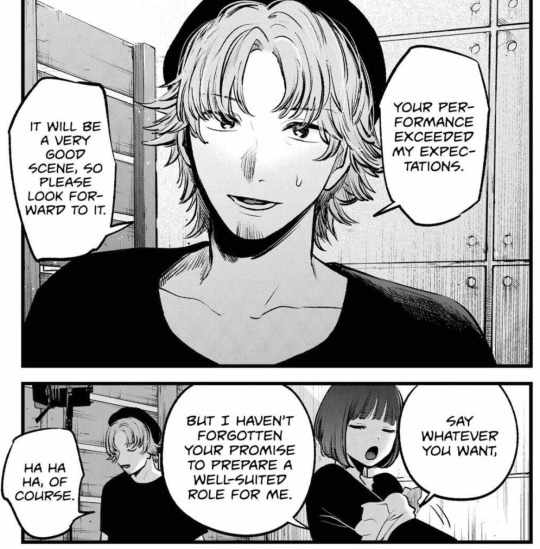
It was as if Ame-no-Uzume-no-Mikoto appointed Aqua and Ruby to come draw Arima Kana out of her Cave, and bring the Sun out again, just like how the deity drew out Amaterasu.
If you think about the title of the show, Oshi No Ko, it literally means The Favorite Child. God’s favored child. Arima Kana had been born chosen by Amaterasu from the very beginning. And Ame-no-Uzume is sending Aqua and Ruby to aid on this quest.
Which explains why it seems like there had been a mission communicated to Aqua from the very beginning. And why Ai was never going to be reincarnated at all.
You would think that if The Crow Girl, which we assume is the divine guide Yatagarasu, was communicating with Aqua about his revenge plan or helping him find Kamiki, that Aqua would hold a more favorable relationship with The Crow whenever it appears to give advice, no?
But it’s exactly the opposite. Because The Crow is guiding him into something that is different from his personal goal that Aqua doesn’t understand.
And this is where I think Arima Kana could be put in danger.
3. Arima Kana is Hikaru Kamiki’s next target.
There were earlier theories that thought Kurokawa Akane was the one to die next, because of what people have now learned of Kamiki’s serial murderer profile targeting big celebrities before their peak, and because Akane had received a bouquet of white roses from him when she won an award.
The chapter when it was expected to happen was a fake-out from Aka Akasaka, and some people think it’s still possible that she’s the target. In fact, I keep seeing recent theory videos who discount Kana and say she’s “the safest”. Hah! If only!
The scenes with Shima D weren’t just a mere plot point to bring scandal to Arima’s name, and threaten her career and life enough that it pushes Aqua to reveal his mother’s secret in exchange. But it’s there because this is the upward path for Arima Kana. So far, the only people who have witnessed her dazzling star power have been fans of the Sweet Today manga, idol otakus, and people who attended Tokyo Blade. That’s not really masterpiece-of-the-century, performing-at-the-dome level. None of these gigs have placed her center stage in what could be Film of the Year, and a Best Actress spot. Now, the chance is here, and it’s real:

I think, The 15-Year-Lie will attempt to draw out Hikaru Kamiki, or that Aqua intends to reveal himself in the movie looking like him, and reveal the identity of his father.
But I also think what would happen is that they would be unsuccessful at taking him down completely. Instead, from the movie, he would be interested in Arima Kana, and target her through the course of her Shima D movie, and plan to kill her before an important awards night.
Alternatively, now that Kana is changing her focus to film, she may consider moving agencies, and ask Frill Shiranui about her agent. And if we’re right, she is likely represented by Kamiki Productions.
Either way, Kamiki will pay attention to her and try to kill her just before she reaches her highest.
But I don’t think Arima Kana will die. I think instead of being saved by Aqua, it’ll be Kana who takes Kamiki down. Echoing back to her getting mad at Aqua for thinking that avoiding her was protecting her, and Aqua believing that Kana doesn’t need help since she’s strong enough to take care of herself.
And then maybe, it’s Arima Kana who draws Aqua out of the darkness too.
And, just like with Kaguya and Shirogane Miyuki, Aka Akasaka is once again writing a story about two people who will defy a fate of divine tragedy, and come out of it being more truthful with each other than they’ve been with themselves all along.
#oshi no ko#oshi no ko spoilers#arima kana#aqua hoshino#japanese mythology#shinto#shintoism#aqua x kana#hoshino aquamarine#onk spoilers#aquakana
537 notes
·
View notes
Text

Nishiki Tenmangu Shrine [錦天満宮]
Kyoto [京都], Japan
November 2023
Ph. Aleksandra
Instagram: tanzdreamer
#Nishiki Tenmangu#錦天満宮#shrine#shinto shrine#神社#my photography#京都#kyoto#japan#日本#japanese#photographers on tumblr#lensblr#mine#japanese culture#photography
96 notes
·
View notes
Text

Inari Ookami!
Commission info
#shinto#inari okami#japanese mythology#art by op#my art#artists on tumblr#I ignored conventions regarding how they're depicted and just did what felt like#every once in a while I gotta to do detailed stuff
50 notes
·
View notes
Text
Japanese Monkey God
User @red-lights-burning asked if there was a connection between Sun Wukong and the monkey gods of Japan. They provided lovely info, which was split between two asks, but I decided to put everything together into a single post.
@red-lights-burning asked:
Japan has their own monkey protector named Masaru AKA Sannō Gongen, who was created back in the early 9th century by Tendai Buddhist sect founder Saichō shortly after he returned from China. So it makes me think if Monkey King was already a thing in the 800’s and if he was one of the inspirations for Masaru.
A description from onmarkproductions (a really great site for anyone curious about Japanese Buddhism and Shintō)
MASARU 神猿
Literally “Kami Monkey.” Masaru is the sacred monkey and protector of the Hie Shrine (aka Hie Jinja 日吉神社, Hiyoshi Taisha 日吉大社). The term “Masura” is often translated as “excel,” reflecting the belief that this sacred monkey can overcome all obstacles and prevail against all evil. Masaru is thus considered a demon queller par excellence (魔が去る・何よりも勝る). In the Heian era, Masaru (also translated “Great Monkey”) was invoked in Kōshin rituals to stop the three worms from escaping the body. Masaru also appears in Japanese scrolls used in Koushin rites.
Here’s a couple other descriptions
SANNŌ GONGEN 山王 権現 SARUGAMI 猿神 Fertility, Childbirth & Marriage
Monkeys are patrons of harmonious marriage and safe childbirth at some of the 3,800 Hie Jinja shrines in Japan. These shrines are often dedicated to Sannō Gongen 山王権現 (lit. = mountain king avatar), who is a monkey. Sannō is the central deity of Japan’s Tendai Shinto-Buddhist multiplex on Mt. Hiei (Shiga Prefecture, near Kyoto). The monkey is Sannou’s Shinto messenger (tsukai 使い) and Buddhist avatar (gongen 権現).
The monkey messenger is also known as Sarugami (猿神; literally “monkey kami”). Sarugami is the Shinto deity to whom the three monkeys (hear, speak, see no evil) are reportedly faithful. The monkey shrine at Nakayama Shrine 中山神社 in Tsuyama City, Okayama Prefecture, is dedicated to a red monkey named Sarugami, who blesses couples with children. According to shrine legends, the local people at one time offered human sacrifices (using females) to this deity. The shrine is mentioned in the Konjaku Monogatari-shu (今昔物語集), a collection of over 1000 tales from India, China, and Japan written during the late Heian Period (794-1192 AD). Sarugami, like Sannou Gongen, is also worshipped as the deity of easy delivery and child rearing. At such shrines, statues of the monkey deity are often decked in red bibs -- a color closely associated with fertility, children, and protection against evil forces and diseases like smallpox.
My answer:
I've read only a little bit about Japanese monkey gods. I previously referenced Sarugami in my article about the possible shamanic origins of primate-based boxing in China. Part of footnote #14 reads:
In Japan, monkeys were also associated with horses and healing via the warding of evil. Apart from monkeys being kept in stables like their Chinese counterparts, their fur was applied to the harnesses and quivers of Samurai because the warriors believed it gave them more control over their mounts. Furthermore, monkey body parts have been consumed for centuries as curative medicines, and their hides have even been stuffed to make protective amulets (kukurizaru) to ward off illness. Likewise, a genre of painting depicts divine monkeys (saru gami), messengers of the mountain deity, performing Da Nuo-like dances to ensure a good rice harvest (Ohnuki-Tierney, 1987, pp. 43-50)
The aforementioned article suggests a connection between monkeys and the Shang-Zhou Da Nuo (大儺 / 難; Jp: Tsuina, 追儺) ritual, an ancient, war-like, shamanic animal dance designed to drive away demonic illness and influences. The pertinent section reads:
It’s possible that the “twelve animals” of the Da Nuo exorcism refer to some precursor of the Chinese zodiacal animals (rat, ox, tiger, rabbit, dragon, snake, horse, goat, monkey, rooster, dog, and pig). If true, monkey fur could have been among the animal products worn by the ritual army. After all, monkeys have long been associated with curing illness and expelling evil in East Asia. [14] A modern example of exorcists who don monkey fur are the shamans of the Qiang ethnic group of Sichuan. The Qiang worship monkeys as the source and savior of their sacred knowledge, as well as the progenitor of their people, the latter being a myth cycle common among ethnic groups of Tibet and southwestern China.
This is the only relevant info that comes to mind. But based on what I know, I would guess that Sun Wukong and the monkey gods of Japan draw upon the same cultural sources. I hope this helps.
Source:
Ohnuki-Tierney, E. (1987). The Monkey as Mirror: Symbolic Transformations in Japanese History and Ritual. Princeton: Princeton University Press.
#asks#Sun Wukong#Monkey King#Journey to the West#JTTW#Japanese Buddhism#Shinto#Buddhism#monkey god#shamanism#Lego Monkie Kid#LMK
72 notes
·
View notes
Text


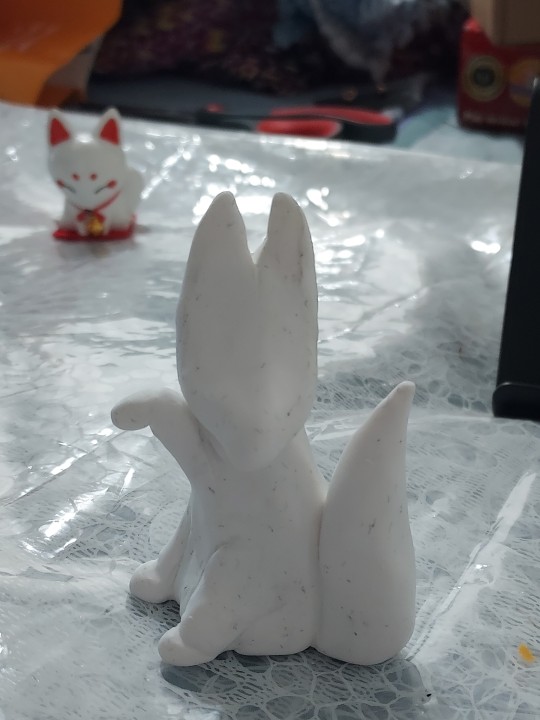
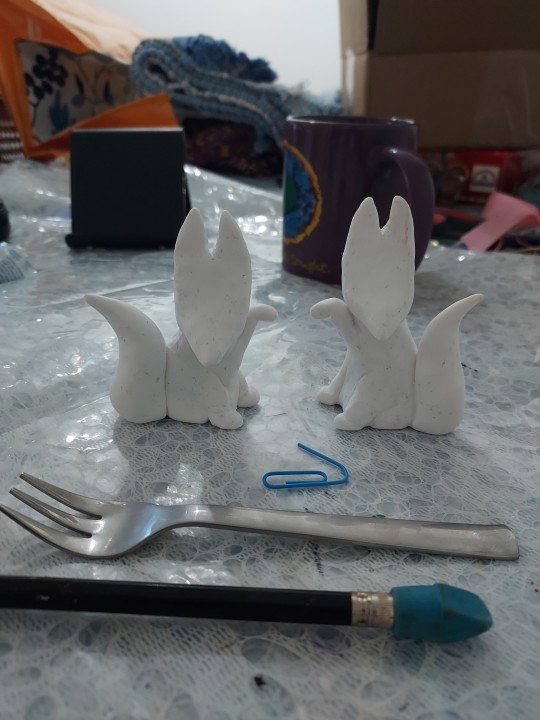

I was going to make a joke about these being the shittiest Inari fox statuettes in the history of Shinto, but you know what? I think I did a pretty good job! Especially considering I made them from scratch out of Fimo dough using a fork, a paperclip and an eraser.
#me? building a home-made kami altar? mayhaps.#obligatory disclaimer: i do not believe in shinto (or any other religion for that matter) nor do i intend to actually worship at that altar#i simply have a deep appreciation for japanese culture and i feel a certain connection with shinto in general and inari-sama in particular#hence wanting to craft something for myself that reminds me of a culture i love#the hobbit crafts#japan#fox#kitsune#shinto#inari
41 notes
·
View notes
Text
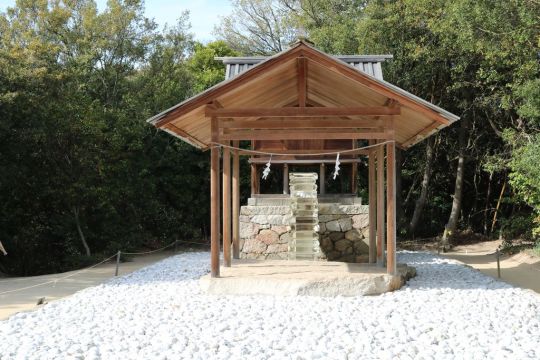


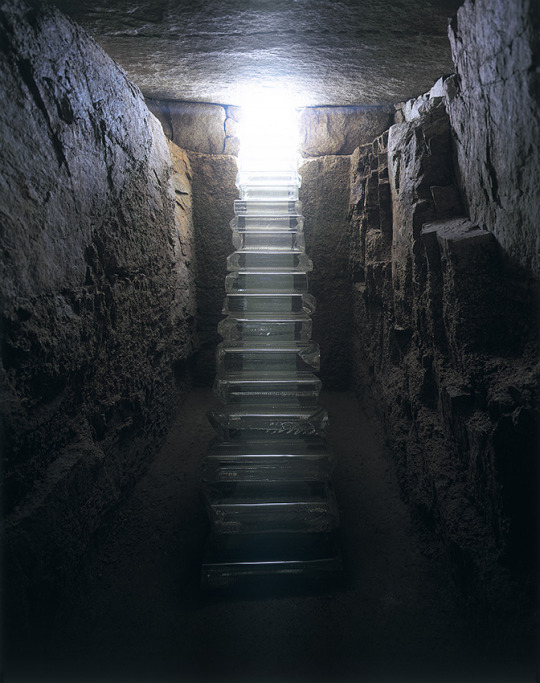
Go’o Shrine (護王神社) by Hiroshi Sugimoto (杉本博司, Japanese photographer and architect, born 23 February 1948) erected circa 1998 on the island of Naoshima. It is a reinterpretation of a style of Shinto Shrine architecture.
The name Go’o means something like “Protector King”.
The glass steps lead up to the structure in which the deity is believed to reside.
The steps also continue down through the white rocks into an underground cave bringing daylight with them.
#legend of zelda#zelda#breath of the wild#tears of the kingdom#botw#loz botw#loz totk#totk#architecture#japan#naoshima#hiroshi sugimoto#japanese architecture#shinto#shrine#art
25 notes
·
View notes
Text
Omamori Usage and Cultural Appropriation
@honeybutteraddict asked:
I have a fantasy setting that is partially based off of Japan, with some elements of the culture drawing from Shinto traditions. Would having a character carry an omamori be cultural appropriation?
If you have to ask this question, I’m afraid you don't yet know enough about Japan to be using Shinto coding in your fantasy setting. The frustrating thing is I can't give you a clear yes/ no, either. This is not because we don't have examples of egregious IRL omamori cultural appropriation. They exist aplenty, including a thriving online trade in used omamori and fake omamori (That is to say: omamori not from a legitimate shrine or temple).
Weirdly, the issue is also not a big deal because Japanese people have varying opinions as far as Shinto and Buddhist tradition on correct omamori usage. However, many perpetrators of this kind of cultural appropriation are not the kind of individuals who would patronize a Japanese religious establishment or comply with proper Japanese religious etiquette even if given the option. Perhaps because the legitimacy of omamori and the etiquette for their handling overall falls under a more intra-community issue, I would argue that poor omamori etiquette would be viewed as hurting the purchaser more than anyone else.
I think my concern is more that I worry for your cultural competency when it comes to coding Japanese culture if your research hasn't helped you answer this question on your own. It's not as concerning as that one time someone asked us if a Japanese character could eat rice (linked), but it's close.
Marika.
#Shinto#Japanese#Japanese religion#cultural appropriation#cultural competency#fantasy#worldbuilding#asks#writeblr
219 notes
·
View notes
Text
This is probably a wildly unpopular thing to say, but I see chatter and takes concerning Hyrule and the Hylians and Hylia where the fandom dissects them as white European, or more often British coded. I've seen it be argued that this is because of surface level European (like Greco-Roman and Celtic) aesthetics are commonly used for them, though these are pretty shallow wrapping paper at best in game. Not that similarities can't be drawn! I'm saying this with all my Irish distaste for Britain! But it seems to be more of a symptom of ignorance or unfamiliarity with Japanese culture and history, and its own tilt at Imperialism.
Which I get! The average Western Fan's closest touchstone to Imperialism is likely Britain.
But Hyrule represents Japan. It's narrative is deeply rooted in Japanese Shinto beliefs regarding the relationship between man, nature and spirits-- including spiritual purity and impurity-- as derived from Buddhist concepts. Hylians are a fantasy race of elves who are Japanese coded, their Royal Family and Imperial structure and attitudes reflect a Japanese Nationalism that is deeply tied to Shinto. Hylia reflects aspects of the Goddess Amaterasu and her role as a progenitor of Emperors in Japanese myth.
I fully understand that many criticisms that apply also pertain to British Imperialism and their own Divine Hegemony, which is valid. But I think it's also falling short to critique and dissect the meta and intention behind this franchise without bothering to have the context of Japanese beliefs and history, and without bothering to really seek it out.
JP Imperialism formed as a response to the Western encroach and their subsequent focus on forced unification of the east in order to defend against it is deeply reflected in how Hyrule operates. The localisation of games like SkSw and TotK have wildly missed their mark in the impression that they give of certain concepts to especially the North American audience, and entire concepts and references to cultural beliefs and history (and what they might imply within game) are simply invisible to many who do not have that context to connect back to.
And I'm not trying to say that what anybody takes from the story they personally received isn't a valid impression based on their own experience with the games and media around them. There are many interpretations and themes that you can take away and play with.
But I don't think that saying Hylians are just white people coded or following Christianised themes or 'basically Britain' and calling it a day is quite good enough if you want to meaningfully and accurately discuss and dissect the narrative and intent of the Zelda franchise. Being able to critically read it with both external and Japanese context is really important in having the full conversation about what it reflects on real world history, religiosity and nuance.
#shut up hero#And yeah I've been in the fandom since the 90s like I'm very aware that the eldest games had some particular Christian imagery#like that one illustration of Link praying to a cross and the presence of a 'bible' in game#as well as a connection to the idea of foreign knights#borrowed European religious symbols (and even other ones) was pretty par for course to see in Japanese fantasy and RPGs at surface level#there's really no depth to them beyond implying the vibes you know?#the og LOZ was inspired by Miyamoto exploring the forest behind an Inari Shrine#same shrine inspired starfox tbh#Ganon as was recently discussed is based on Cho Hakkai and Ox King in Journey to the West#but it's always been Shinto in approach and philosophy since the beginning#SkSw era forward has just made it undeniably more JP nationalist in shape
50 notes
·
View notes
Text

Underworlds
#underworld#mythology#norse mythology#christian mythology#greek mythology#hindu mythology#chinese mythology#aztec mythology#japanese mythology#buddhism#hinduism#shinto#christianity#my art#afterlife
266 notes
·
View notes
Text


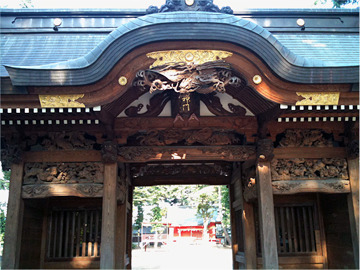



小野神社(東京都多摩市)
https://www.sa-ka-ki.com/jinja/tokyo/ono-tama/
#神社#小野神社#日本#東京#多摩#狛犬#鳥居#楼門#彫刻#jinja#onojinja#shrine#shinto#japan#tokyo#神道#komainu#torii#nippon#japanese culture#art
59 notes
·
View notes
Text
Shinto Beginner Guide Version 5.8.2023
Hi everyone,
My apologies for the constant re-posting of this guide. There is always some errors I miss when I release a new version and I'm very thankful to those who help me edit and refine the guide over time.
This is the most recent version as of May 8th 2023. Instead of a zip file, I've compiled it all in a single PDF you can download Here
In addition, this time I've also made a convenient online version from this link: www.livingwithkami.com/beginner
For a practical reference, there is a list of shrines overseas, where to receive sacred items, a reading list, and a list of Norito as well.
I hope this can help our community and be an accessible resource.
I give my deep thanks to Kami-sama and everyone who helped me write and edit this guide, who contributed towards it, and who guided me through the years.
This guide was not written by myself alone but with the help of Kami-sama and the community.
I am only posting it here to begin with but please feel free to share it anywhere you like.
I may have to update it again this Autumn depending on the changes in the community, but this is the most recent version.
Thank you very much.
Sincerely,
Rev. Olivia
#shinto#shintoism#shinto religion#shinto guide#shinto beginner#shinto beginner guide#shinto starter guide#shinto starter#shinto newcomer#japanese religion#resource#shinto resource#japan#japanese culture
116 notes
·
View notes
Text

Kiyosu, Japan
#japan#history#asia#samurai#culture#japanese#art#shinto#creativity#war#photo#photography#pinterest#edit#ancient civilizations#ancient#ancient history#historical
27 notes
·
View notes
Text
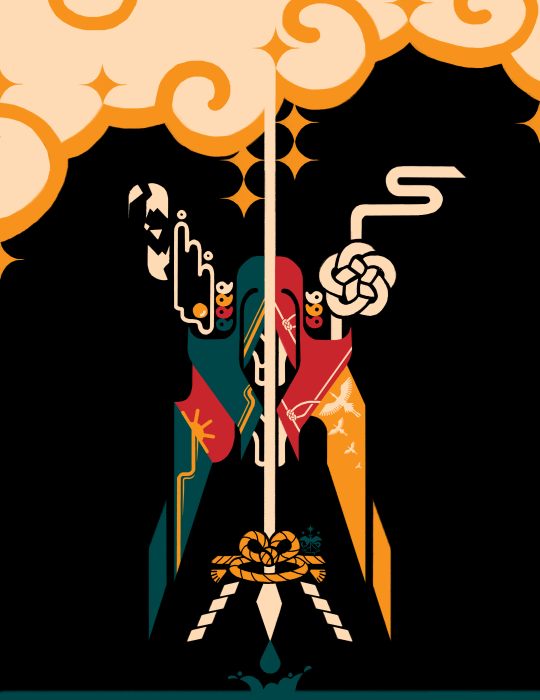
Abstract Kuniumi
Commission Info
#art#my art#artists on tumblr#shinto#izanami okami#izanagi okami#kojiki#japan#japanese mythology#I've been on a Shinto roll lately#only my faith is bringing me peace these days /lh
38 notes
·
View notes
Photo
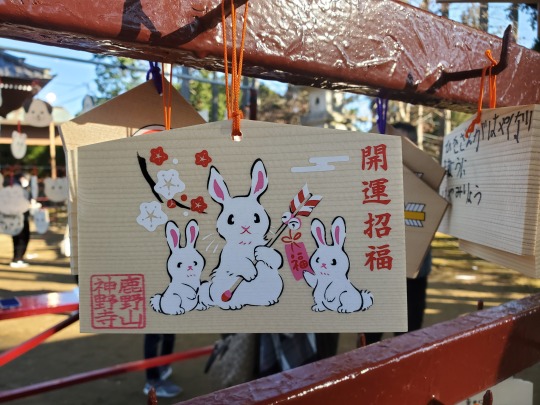
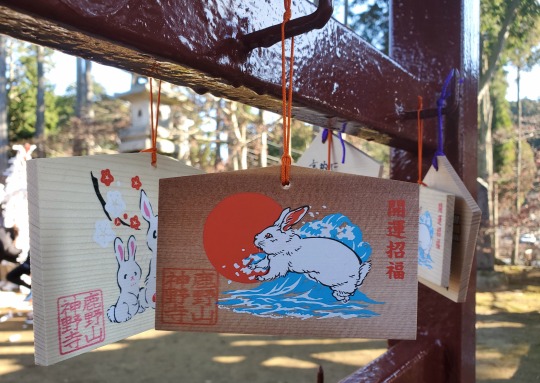

Japanese Ema
Ema are wishing boards you find at many Japanese shrines and temples. This year we were surprised to see a new board at Kanozan temple for pets. Unlike the one for humans that already had an image on one side, you decorated the animal wishing board yourself. However there were only dog and cat pre-cut boards. Given it is the year of the rabbit, I was surprised they were not there.
222 notes
·
View notes